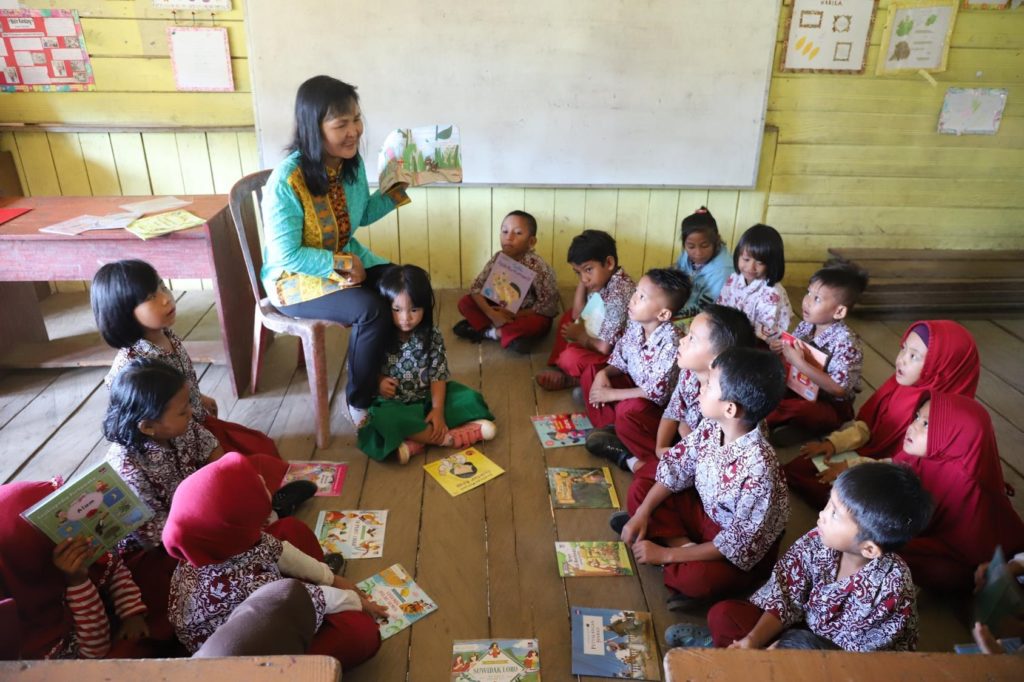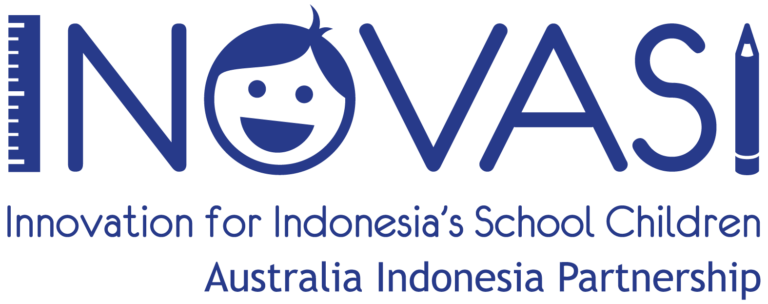
Nurhani’s journey as a teacher began in 1986. For 18 years, she served in the remote part of Pesok before moving to Binai in 2004. Nurhani taught in the early grades for a long time and has faced all of its challenges, including teaching children how to read quickly.
“INOVASI’s Early Grade Literacy program helps us build a reading culture among the students. We try to foster the children’s love for literacy by reading stories. This method has succeeded in making them diligently come to school,” said Nurhani.
Nurhani teaches at a branch school; the main school is SDN 008 Binai state elementary school.
“In the past, before the bridge was built, we had to travel three kilometers to the main school. The students had to cross the river if they wanted to get to school. The journey was pretty dangerous because the children are small. That’s why this school was built,” she explained.
SDN 008 Filial state elementary school is located in the middle of a palm oil plantation, so it’s not surprising that most of the students are palm oil plantation workers. Their homes are scattered and quite far from the school. The distance often prevents them from “going downhill” (turun gunung) to school, which is a local term for coming.
Changes have happened since Nurhani started reading stories in the class. Now, the students are more committed to coming to school. She does this activity every day in various ways so that the students don’t get bored. Sometimes, the students listen from their respective seats; other times, the whole class sits on the floor together. Essentially, Nurhani tries to make the reading activity as comfortable and enjoyable as possible.
According to Nurhani, it is very important to keep the reading activity interesting. She does this through using gestures and facial expressions and playing with voices. Occasionally, she even invites the students to ask questions. That way, she can tell whether they’re following the story or not.
“We don’t have many story books here. I have to be smart in sharing the existing story reserves so that the material lasts until the end of the semester. I have a special trick for that. For one story book, I will not read it through to the end. I save some of the stories for the next day. This method not only works to stretch each story, but also to raise the students’ curiousity. As a result, the next day, they come to school again,” said Nurhani.
In addition to reading stories, Nurhani has started implementing PAKEM (Pembelajaran Aktif, Kreatif, Efektif, dan Menyenangkan, or Active, Creative, Effective, and Fun Learning). She often conducts group work, questions and answers, and presentation activities. Nurhani also uses learning media. She displays all of her students’ work and learning materials in the reading corner. A lot of students’ work is stored in the classroom, which is made of wooden planks.






